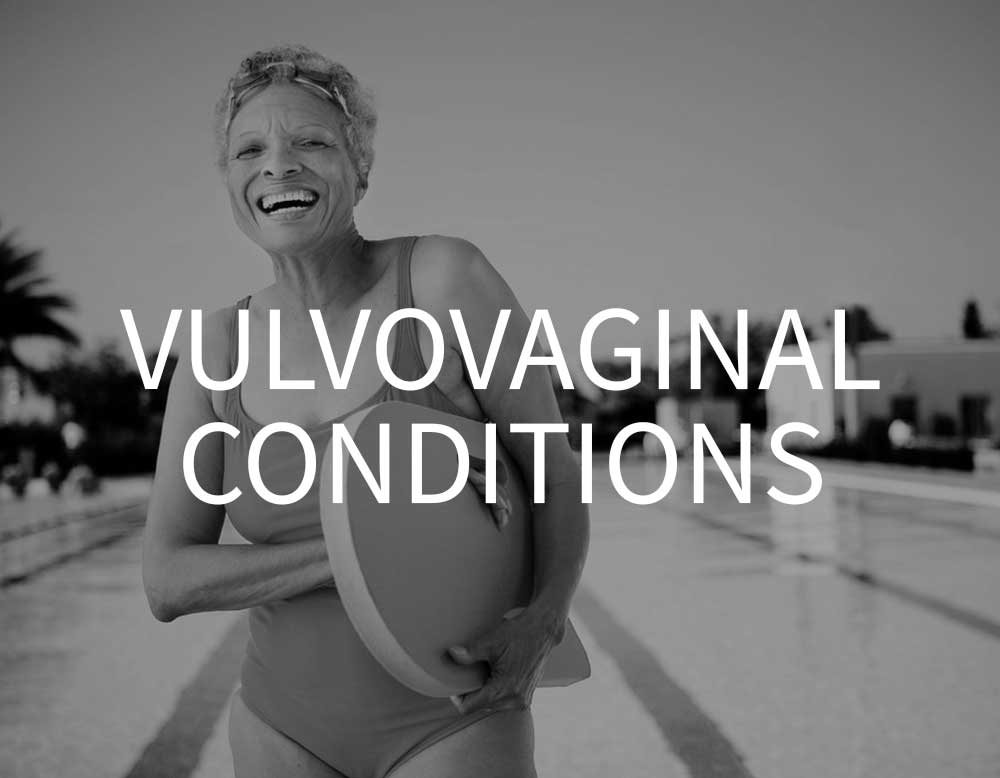VulvoVaginal Conditions
VulvoVaginal Conditions
Many kinds of vulvovaginal conditions present with similar or overlapping symptoms. Whether attributed to age-related changes, bacterial or viral infections, antibiotic use, or immunological factors, a correct diagnosis at The Center for Women’s Sexual Health & Medicine is the key to effective treatment.
The gold standard for diagnosing vulvovaginal disorders includes the patient history, physical examination, and in some cases, a vulvar colposcopy and vulvar biopsy.
Our dedicated providers take a multidisciplinary team approach when diagnosing and treating infections, diseases, and vulvar skin conditions.
Vulvovaginal Conditions & Disorders
We diagnose and treat a variety of vulvovaginal conditions, including:
- Chronic Vaginal Candidiasis – can seriously impact vulvar health. Caused by a type of yeast, candidiasis is often characterized by vaginal itching, abnormal discharge, and discomfort during sex. Recurrent vaginal yeast infections are more prevalent in people with diabetes and those taking antibiotics for extended periods.
- Bacterial Vaginosis – is the most common cause of vaginal irritation and strong- smelling vaginal discharge in women who have not yet transitioned into menopause. This infection is caused by an overgrowth of anaerobic bacteria that naturally occur in the vagina. Treatment entails topical or oral antibiotics.
- Genital Herpes – a sexually transmitted infection that may cause genital irritation as well as blisters on the vulva, labia, and/or perianal area. The herpes simplex virus causes it. It flares up during outbreaks throughout one’s lifetime. Outbreaks can be managed with antiviral medications.
- Vulvar Intraepithelial Neoplasia (VIN) – is not cancer but considered a premalignant condition of the vulva that may cause skin color changes, raised lesions, and/or itching. The exact cause has not been identified but it is a type of dysplasia linked to HPV and immunosuppression.
- Lichen Sclerosus – is a chronic inflammatory skin condition that appears as patchy, thin, white skin occurring in the vulvar and perianal area. It usually causes intense itching and sometimes scarring of the vulvar area and is usually seen in post-menopausal women. Untreated, this condition may increase the risk of squamous cell carcinoma.
- Vulvodynia – is best described as chronic pain in the vulvar area or opening of the vagina. The exact cause is not known but may be due to infections, hormonal changes, irritation or injury to the nerves surrounding the area, external irritants, or muscles spasms or weakness in the pelvic floor.
- Lichen Planus – an inflammatory condition that can produce discolored patches or bumps in and around the vulva. It is often painful and itchy and is effectively managed with prescription medications and corticosteroids.
- Lichen Simplex Chronicus – is characterized by dry, scaly, and hyper- pigmented skin lesions that are irregular in shape. These thickened, leathery patches of skin, known as plaques, are caused by excessive rubbing and itching. The forearms, wrists, neck, and vulva are commonly affected.
- Desquamative Inflammatory Vaginitis (DIV) – characterized by intense vaginal inflammation, irritation, and yellow vaginal discharge. It may also cause itching and pain with sex. The exact cause is unknown, but occurs primarily in perimenopausal women.
- Vaginal Dryness /Vaginal Atrophy – thinning of the vaginal walls and lack of lubrication and elasticity that can lead to soreness, itching, and painful sex. Chronic vaginal dryness is linked to a higher incidence of urinary tract infections and is a leading cause of female sexual dysfunction. Declining hormone levels are the primary cause of vaginal dryness, but certain medical disorders, medications and/or hygiene products can also be responsible.
- Genital Warts – soft, flesh-colored growths on the vulva or perianal area are caused by a specific subtype of the human papillomavirus (HPV). The warts can be treated by using Trichloroacetic acid, cryotherapy, topical medications, or excised.
- Genital Cysts – are filled with liquid or semiliquid material and are usually harmless and not painful. They may originate from the skin, hair follicles or sebaceous glands. There are also cysts that may develop when a gland or duct near the vaginal opening becomes blocked.
Related Topics
















